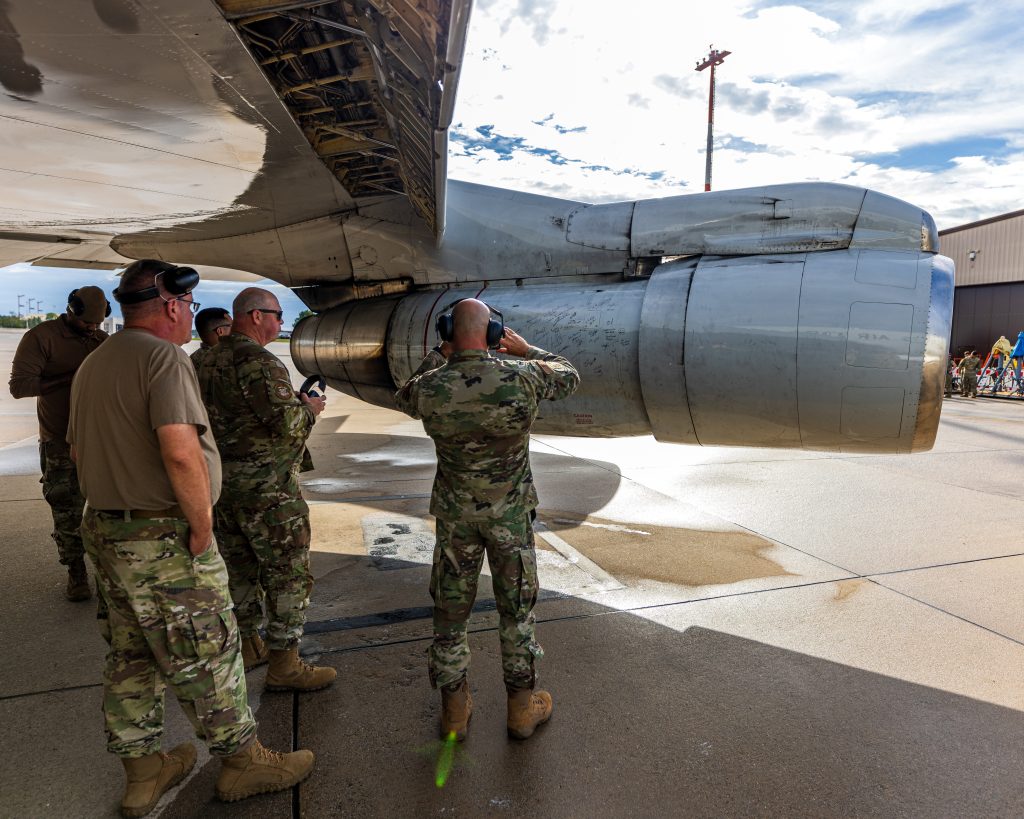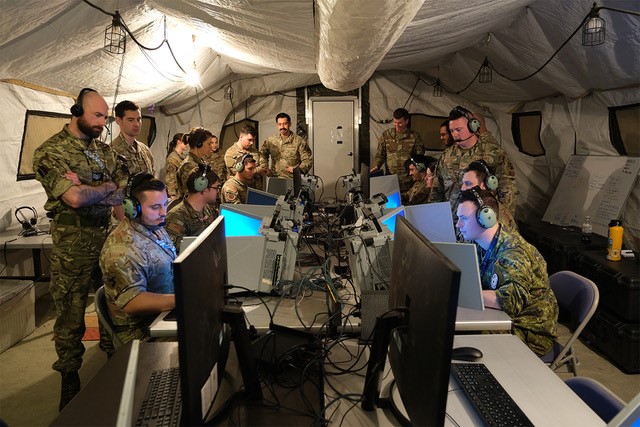AURORA, Colo.—As the Air Force’s command and control enterprise starts a massive transformation, the generals leading the charge say they have no doubt the service will always need battle managers. But how those battle managers will transition from today’s C2 platforms to tomorrow’s technology remains an open question.
“I think there will be an even higher demand signal for battle managers, not necessarily air battle managers, but just battle managers in general,” said Brig. Gen. Daniel C. Clayton, director of the Advanced Battle Management System Cross-Functional Team during the AFA Warfare Symposium. “That skill set and that transition, I think, will be hugely important going forward.”
The transition will be difficult, said Heather Penney, senior resident fellow at AFA’s Mitchell Institute for Aerospace Studies. The Air Force has already completely retired its fleet of E-8C JSTARS aircraft and is steadily winnowing its E-3 Sentry AWACS fleet, as well. Those platforms will be replaced with space-based assets and the E-7 Wedgetail, but the first Wedgetail will not join the fleet until 2027. Multiple officials noted during the symposium that negotiations with manufacturer Boeing have been “hard” and “challenging,” suggesting delays are possible.
What happens between now and then, therefore, is critical for officers trained to do C2 on those specific platforms.

“In the Air Force, our manpower billets are tied to our platforms,” Penney said during a panel discussion. “And there’s a serious gap before we field E-7, which may lead key bands of battle managers with no option except to get out.”
Last April, Col. Joshua Koslov, commander of the 350th Spectrum Warfare Wing, voiced similar concerns about EW talent: “We build electronic warfare officers based on platforms, and that’s not the best way to do that,” Koslov said then. “As we divest platforms or divest crew members off of platforms, your pool of electronic warfare officers gets a lot smaller.”
According to the Air Force’s latest data, more than 2,400 enlisted Airmen and 1,800 officers are employed in the C2/BM career fields—a highly specialized skill that experts have often described as an “art.”
Clayton and Brig. Gen. Luke Cropsey, the Integrating Program Executive Officer for command, control, communications, and battle management (C3BM), say they are trying to introduce a more scientific approach, crafting a model that breaks down battle management into 13 specific “sub-functions.”
Clayton said that model will be domain and level agnostic.
That is a key shift, Cropsey said: “This distinction between strategic, tactical, and operational C2 is becoming increasingly less helpful. At the end of the day, the decisions, the data flows, and who has access to them are becoming increasingly important.”
In the future, they say, battle managers won’t be tied to platforms and the technical solutions will be more common across the enterprise, enabling data to flow more easily. New computer systems and more flexible, robust software is already in the testing and experimenting phase, Cropsey and Clayton said.
“Those 13 sub-functions of battle management are already being taught as part of the syllabus to ensure that going forward, the next generation of air battle managers will be able to have those skill sets,” Clayton said. Among teaching the transformational battle management model is the U.S. Air Force Weapons School, the service’s premier warfighting schoolhouse.
Battle management will become more demanding and complex as the Air Force evolves its Agile Combat Employment concept, in which teams of Airmen disperse to small or austere locations and move quickly.
“The more that we start to experiment and test out ACE across the world, we’re going to have an even higher demand signal for people who have been critical thinking skills to make those battle management decisions in the future,” Clayton said. “And we’re going to have to continue to foster that.”
